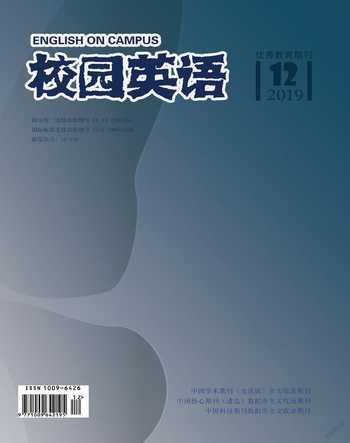On Linguistic Features of Translationese in English-Chinese Translation
【Abstract】With the increasingly extensive international communication and culture exchange, translation, as an important communicative media, undertakes the responsibility to facilitate interlingually mutual understanding. It is evident that the translation between English and Chinese is the most frequent one among all interlingual translations. In the course of translating English to Chinese, translationese arises, which has features distinct from both ST (Source Language) and TL (Target Language) and influences both of them. So far, the study on translationese has become a focus of scholars at home and abroad. On the basis of the analysisof original English and Chinesecorpuses, the comparison will be done between original corpus and translation corpus, especially English-Chinese translation corpus, in attempt to explore the linguistic features of translationese in English-Chinese translation.
【Key words】Linguistic features; translationese; English-Chinese translation
【作者简介】张啸宇(1998-),男,山東莱芜人,武汉大学外国语言文学学院2016级本科生。
1. Literature review
This part will mainly present the definitions of translationese given by certain famous scholars and will point out its linguistic features.
1.1 Definitions of translationese
In The Theory and Practice of Translation, Eugene. A. Nida defined translationese as “formal fidelity with no no constant attention to the content and the effect of the message”. Almost 20 years later, in A Textbook of Translation, Peter Newmark described it as “literal translation that makes little sense or is unnatural”. In Dictionary of Translation Studies, “translationese” is defined as “A general pejorative term used to refer to TL usage which because of its obvious reliance on features of SL is perceived as unnatural, impenetrable or even comical”. Therefore, translationese should be understood as a degenerative target language which, to a large extent, is effected by the source language, particularly in the aspect of language-syntax.
1.2 Features of translationese in English-Chinese translation
According to the definitions of translationese mentioned above, we are clear that the SL influences translationese so deeply that translationese is different from original TL in light of the syntactic level. Therefore, it is of great necessity to discuss the differences between translationese and TL as well as the features of translationese. I sum up three main features of translationese in English-Chinese translation as follow.
(1) Translationese in E-C translation features the superfluous use of preposition and conjunction words due to its reliance on the syntactic manner of English. It has been acknowledged among most linguists that English is more hypotactic while Chinese is more paratactic. For example, “想來你就来吧”, rather than “如果你想来你就来”, is the standard translation of “Come if you like”. Because the conjunction words in English, such as “if” in this sentence, are always omitted in Chinese in ordinary context. Therefore, “如果你想来你就来” is a typical version of translationese
(2) Translationese in E-C translation features the over-frequent use of inanimate subjects. It’s known that impersonal subjects are more common in English than in Chinese. For instance, the decent Chinese expression of “Bitterness fed on the man who had made the world laugh” is “这位曾给全世界带来欢笑的人,自己却饱尝辛酸” instead of “苦痛哺育了这位曾使全世界欢笑的人”. Apparently, the latter version is translationese because in Chinese, it is not frequent to start a sentence with an inanimate subject.
(3) The overuse of passive voice is another feature of Translationese in E-C translation. In English, passive voice is used more widely and it can be applied to more contexts. While passive voice is less common in Chinese. To illustrate, the translationese version of “the importance of oceanography is seldom appreciated by people” is,which evidently mars the smooth expression of original Chinese. Therefore, by comparison, “人们几乎不理解海洋学的重要性” is more readily accepted version.
2. Conclusion
Translation is not merely a trans-lingual communication process, but a trans-cultural one, in a deep layer. Based on the full understanding of original linguistic features of languages, the trace of translationese can be more likely to be eliminated.
References:
[1]Ren Xiaofei. On Formal Correspondence of C/E Translation in Terms of Hypotaxis and Parataxis[J]. Chinese Translators Journal,23, 33-35.
[2]He Shanfen, Contrastive Studies of English and Chinese Languages[J].2002.

